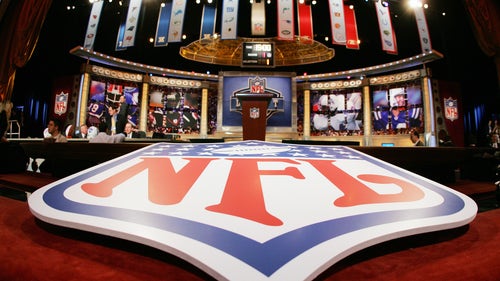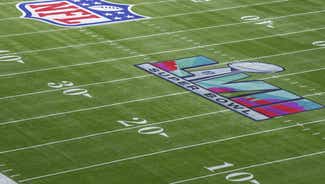
NFL draft: Evaluating ex-top recruits who didn't match hype
Receivers Malachi Dupre of LSU and Travis Rudolph of Florida State are prime examples of pro prospects who left high school as five-star recruits and now enter the NFL draft trying to overcome perceptions that they never fulfilled their promise in college.
For NFL teams, the challenge is figuring out why such players haven't met expectations - and whether they might still flourish as pros.
''Everything in scouting is how a guy transfers to the next level,'' says Chris Landry, a Louisiana-based scouting consultant who has advised NFL teams on prospects for around three decades.
''If you're productive at the college level, that's a plus, but it doesn't guarantee you're going to be productive at the NFL level. And we've seen many guys that are not productive at the college level become very productive in the NFL because they're utilized a little differently; the system fits a little better.''
Rudolph, of West Palm Beach, Florida, and Dupre, of suburban New Orleans, were widely seen by recruiting analysts as the two best receivers in the nation entering college in 2014. Neither have had a 1,000-yard or 10-touchdown season, but both still decided to leave school a year early.
There are a variety of reasons why players don't live up to the hype in college. Sometimes injuries set them back. That was the case with players such as Alabama defensive back Eddie Jackson (reconstructive knee surgery in 2014, broken leg in 2016) and UCLA defensive tackle Eddie Vanderdoes (reconstructive knee surgery in 2015).
Sometimes they lose playing time to teammates who perform better in a particular scheme. Former Tennessee running back Alvin Kamara is one such example, having spent most of his Volunteers career as a backup after coming in as a five-star prospect who'd been lured away from Southeastern Conference rival Alabama.
Receivers Rickey Seals-Jones and Speedy Noil were regarded as recruiting triumphs for Texas A&M when they joined the Aggies.
Neither had even a 600-yard season and were outperformed by teammate Josh Reynolds, a junior college transfer who is now projected to be selected ahead of them in the draft, which starts Thursday night.
And sometimes the offense doesn't play to their strengths.
Dupre, who entered LSU with star running back Leonard Fournette, found himself in an offense that kept the ball on the ground most of the time. Making matters worse, two of the three QBs with which Dupre played wound up benched and transferred.
Dupre said ''the biggest question mark'' on his resume ''is the lack of production in the passing game as a whole, not just specifically me.''
The 6-foot-4 Dupre sees himself in the mold of Saints receiver Michael Thomas, who didn't put up huge numbers at Ohio State and was a mid-second-round draft pick. Thomas wound up being the NFL's most productive rookie receiver in 2016, with 92 catches for 1,137 yards and nine TDs.
Dupre noted that Thomas was in a run-heavy offense in college that featured Ezekiel Elliott. But when he lined up with New Orleans' Drew Brees, Thomas was ''with a great quarterback and an offense that passes the ball the majority of the time, and he was able to show his true talent.''
NFL draft analyst Phil Savage, who works with the Senior Bowl, ESPN and SiriusXM radio, called Dupre ''a skilled athlete,'' adding, ''He's tall enough. He's fast enough.''
''He's more of a developmental candidate because he didn't have the major production (at LSU) and they were obviously somewhat limited in the passing game,'' Savage said. ''But he does have the potential.''
Rudolph finished his Florida State career with better numbers than Dupre, but the Seminoles also passed more. Both receivers are now projected as middle- to late-round picks.
''I felt like I was making some great blocks even when I wasn't getting the ball, really being an all-around receiver,'' Rudolph said. ''Honestly, I just realized I have to suck it up because that is how the offense is. It wasn't my time to get the ball. I know when my time comes, I'm supposed to make the plays.''
Kamara can argue that he made plays when his time came. Backing up Jalen Hurd most of last season, Kamara had 103 carries for 596 yards and nine TDs rushing to go with 40 catches for 392 yards and four TDs receiving.
Landry figures the 5-foot-10, 214-pound Kamara could be the fourth running back drafted, perhaps in the second round.
''The guy has some run instincts. He's got size and speed, and that's what gives him a chance,'' Landry said. ''In some cases, players were not developed or coached or utilized well in a (college) system.''
Kamara doesn't sound bitter about having been a backup, even suggesting that it might have ''ended up being a good thing'' in terms of helping him maintain better health.
''When you're going through it, you kind of want more carries,'' Kamara said. ''But at the end, I think it worked out in my favor.''
---
For more NFL coverage: http://www.pro32.ap.org and http://www.twitter.com/AP-NFL
---
AP Sports Writers Steve Megargee in Knoxville, Tennessee; Joe Reedy in Tallahassee, Florida; Ralph Russo in New York; and John Zenor in Tuscaloosa, Alabama contributed to this report.








